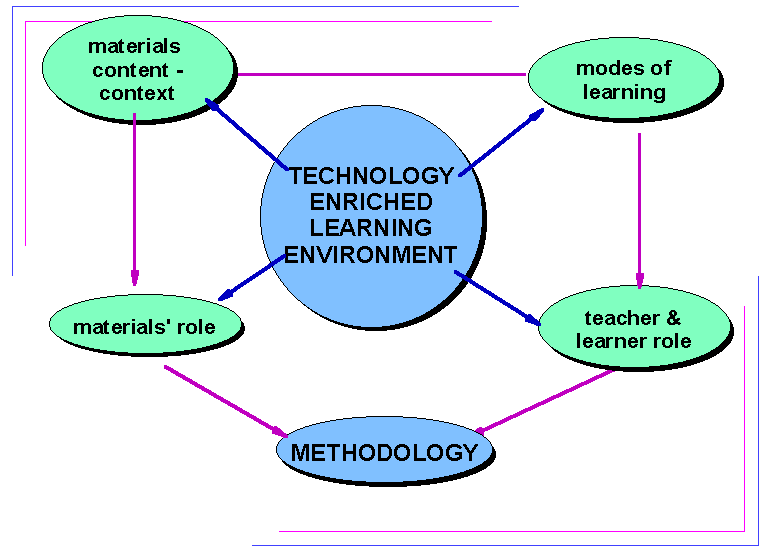“We see a move from computer assisted language learning (CALL) to technology enhanced language learning (TELL) [,,,]. One of the main differences between CALL and TELL is that we see technology not as assisting language learning, but as part of the environment in which language exists and is used” (Walker A, & G. White (2013:9)) Technology Enhanced Language Learning. Oxford Handbook for Language Teachers. OUP: Oxford.
Considering the tools and applications dealt with in this week’s readings, how do the changes in the technologies reflect (or not) the move described in the statement above?
If the changes in technologies are leading language teaching toward “a state of normalisation in which technology is invisble and truly integrated” (Bax, 2003:13), then we are heading in the right direction. Through my own experience, we have moved from a classroom with the teacher up front, standing next to the whiteboard, using the CD player, to one which had the computer at the centre, to one where the teacher is often up front working with the IWB, encouraging students to interact with it or the whiteboard, and where the CD player has been completely replaced by audio recordings stored inside the IWB. Where once were a number of objects: books, computers, white/blackboards, there was a large computer, which rarely worked (operating issues), dominating the horizon. Now there is one main object that is able to replicate the operations of tool, the IWB. Where once tools were separate, now they are one – it can be content-provider and interactive-collaborator at the same time.
For younger children, I feel there is very much a sense of excitement and newness about tech tools in the classroom. Anything new they want to play with, and, psyhcologically, see using them as ‘not learning’ but ‘having fun’. However, over time, CALL becomes less of a special thing, and more of the norm, more invisible.
However, as new technologies are developed, digital natives are rendered digital immigrants, and forced to renew their skills in order to keep up. It stands out because we are not sure how to use it, and only becomes invsible after practice. So this normalisation is an on-going process, a cycle.
References
(Walker A, & G. White (2013:9)) Technology Enhanced Language Learning. Oxford Handbook for Language Teachers. OUP: Oxford.


